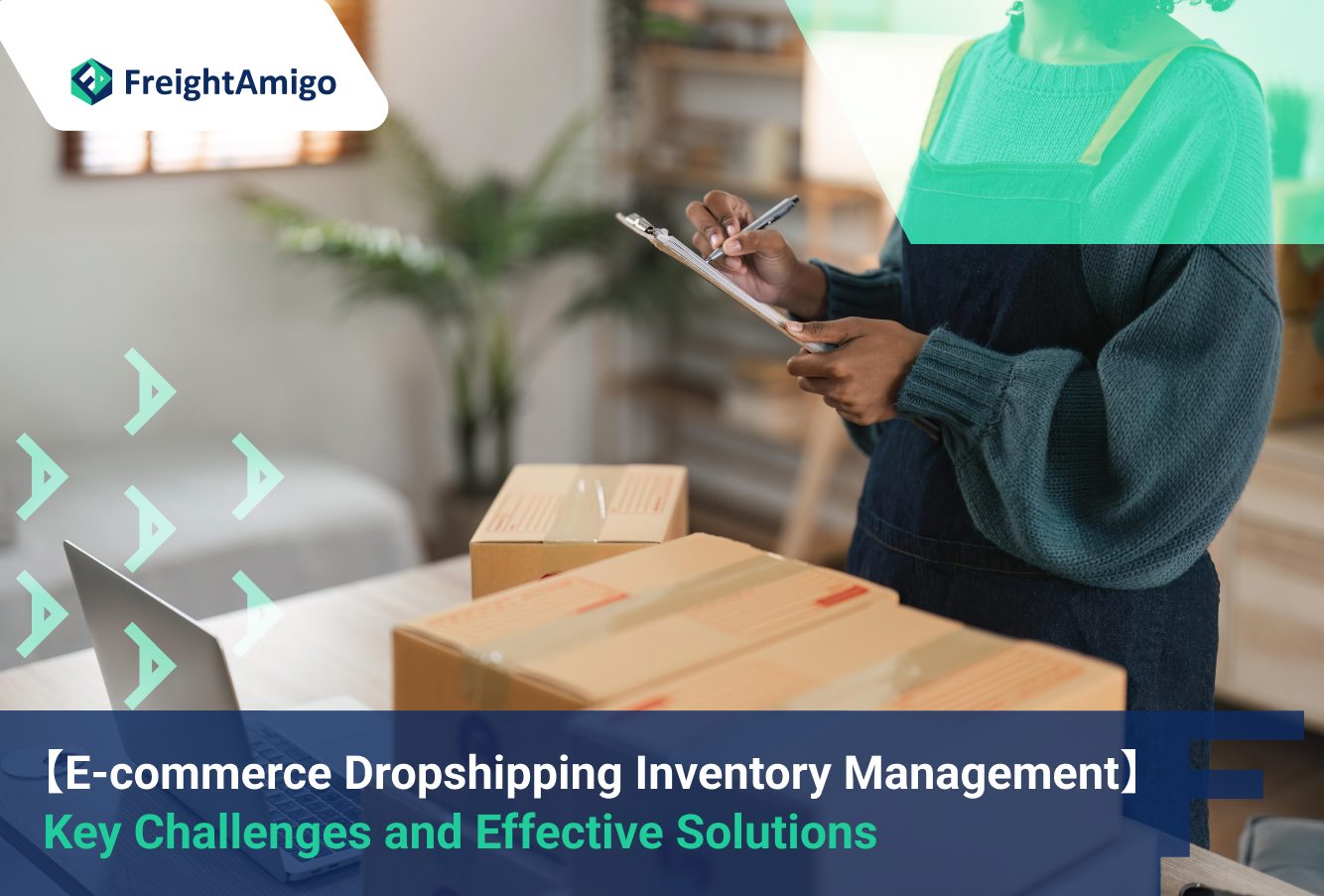Author Name: Tiffany Lee – Marketing Analyst at FreightAmigo
E-commerce dropshipping inventory management is an innovative business model that has revolutionized the global online retail sector. Despite the numerous advantages it offers, managing inventory in an e-commerce dropshipping business can present unique challenges. However, with a strategic understanding of these challenges and the right solutions, you can turn these obstacles into opportunities for growth and profitability.
Want To Compare The Best Express, Air Freight, Sea Freight, Rail Freight & Trucking Rates So As To Have Better Control On Cost?
Understanding E-commerce Dropshipping
E-commerce dropshipping is a retail fulfillment model that allows entrepreneurs to operate an online store without maintaining a physical inventory of products. Instead, when a customer places an order, the retailer purchases the product from a third-party supplier, who then ships the product directly to the customer. The retailer acts as a middleman, facilitating the sale and handling customer service.
This business model offers numerous benefits, including low startup costs, reduced risk, and the ability to operate from anywhere. However, despite not dealing with physical inventory, managing dropship inventory presents its own set of challenges.
Top Challenges in E-commerce Dropshipping Inventory Management
Effective e-commerce dropshipping inventory management involves maintaining accurate, real-time data about the products available from suppliers, the status of orders, and the shipping processes. Here are some of the main challenges in this area:
-
Tracking Available Inventory
One of the key challenges is the need to accurately track the available inventory from multiple suppliers. Any delay or error in updating the inventory data can lead to over-selling, resulting in order cancellations, refunds, and customer dissatisfaction.
-
Managing Supplier Relationships
In the dropshipping business model, the success of the retailer largely depends on the reliability and performance of the suppliers. Hence, establishing and maintaining solid relationships with trustworthy suppliers is crucial.
-
Handling Shipping Costs and Logistics
Although the logistics of shipping are typically handled by the supplier, the retailer needs to understand these costs and timelines to set accurate expectations for customers and to calculate product pricing accurately.
-
Ensuring Product Quality
Since the retailer does not handle the product directly, ensuring the quality of the products can be challenging. If a customer receives a poor-quality product, it reflects poorly on the retailer, even if the fault lies with the supplier.
Effective Strategies for Successful E-commerce Dropshipping Inventory Management
Despite these challenges, there are several strategies that can help you effectively manage your e-commerce dropshipping inventory:
-
Utilizing Inventory Management Software
Effective dropship inventory management is a vital component of a successful dropshipping business. Inventory management software can provide real-time insights into your inventory levels and automate inventory-related tasks. By using such software, you can reduce manual errors, improve operational efficiency, and enhance inventory control.
-
Partnering with Reliable Suppliers
Choosing reliable suppliers is crucial for the success of your dropshipping business. Research potential suppliers thoroughly before partnering with them. Look for suppliers with strong track records, positive reviews, and efficient shipping logistics.
-
Implementing a Solid Returns Policy
Having a well-defined returns policy is crucial in managing returns and refunds efficiently. A clear and customer-focused returns policy not only builds confidence in your buyers but also helps simplify the returns process.
-
Considering Print on Demand
Print on demand (POD) is an inventory management strategy that allows you to create custom products as orders come in, eliminating the need for inventory management. With POD, you can offer a wide range of customizable products without the upfront investment.
Conclusion
Proper inventory management is crucial to running a successful and profitable e-commerce dropshipping business. By understanding the challenges involved and implementing effective strategies, you can streamline your operations, improve customer satisfaction, and boost your bottom line. Remember, every successful business owner adapts and learns as they go along. It’s important to continually review and adjust your strategies to ensure your business stays efficient and competitive.
How Can Advanced Tech Solutions Help?
Maintaining accurate inventory levels across multiple online sales channels is no easy feat for e-commerce dropshippers. Embracing advanced tech solutions, like eCommerce shipping management software, is key to overcoming inventory management challenges in e-commerce dropshipping. These solutions not only provide real-time updates on inventory levels but also automate various corresponding tasks, reducing manual errors, and improving operational efficiency. And with centralized ordering, shipping and tracking through a single platform, you gain back valuable time to scale your business.
Furthermore, these tech solutions can integrate with various e-commerce platforms and sync with suppliers’ systems, ensuring accurate and up-to-date inventory information. By leveraging these technologies, e-commerce dropshipping businesses can optimize their inventory management, gain a competitive edge, and drive long-term success in the world of e-commerce.
There Are Different Options For Cargo Transportation. If You Want To Choose The Most Convenient And Suitable Solution, It Is Best To Have The Full Support Of Logistics Experts! Discover how FreightAmigo can help maximize your profits!
Read More:
【E Shop+】Three Key Elements to Successful Dropshipping
【Logistics 101】 The Impact of Toy Shipping on the E-commerce Industry
【E-commerce Dropshipping】 The Ultimate Guide to Starting Your Own Online Store
Finding the Right Fulfillment Solution for Your E-Commerce Business
If you have any inquiries on logistics/supply chain, feel free to contact FreightAmigo now:
Chat with us online | Hotline : +852 28121686 | WhatsApp: +852 27467829









































